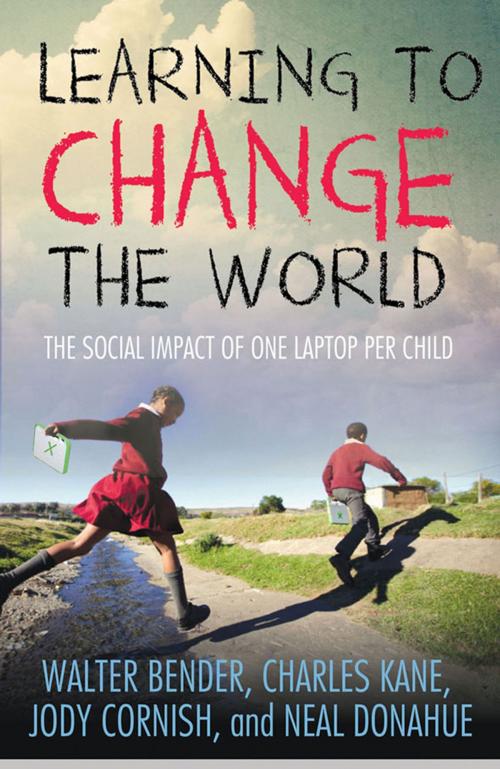Learning to Change the World
The Social Impact of One Laptop Per Child
Nonfiction, Reference & Language, Education & Teaching, Teaching, Computers & Technology, Business & Finance, Industries & Professions, Nonprofit Organizations & Charities, Social & Cultural Studies, Political Science| Author: | Charles Kane, Walter Bender, Jody Cornish, Neal Donahue | ISBN: | 9781137000484 |
| Publisher: | St. Martin's Press | Publication: | December 11, 2012 |
| Imprint: | St. Martin's Press | Language: | English |
| Author: | Charles Kane, Walter Bender, Jody Cornish, Neal Donahue |
| ISBN: | 9781137000484 |
| Publisher: | St. Martin's Press |
| Publication: | December 11, 2012 |
| Imprint: | St. Martin's Press |
| Language: | English |
UNESCO estimates that eleven percent of primary school–age children—seventy-two million worldwide—are not enrolled in or attending school. Children who do attend may find themselves in schools that lack adequate space, facilities, or resources—impossible situations for learning. It is against this backdrop of profound need that One Laptop per Child (OLPC) emerged in 2005. The mission of the organization is to "empower the children of developing countries to learn." They created the first affordable netbook specifically built to withstand harsh climates and the handling of young children—the bright green and white XO. At the 2005 World Economic Forum, Nicholas Negroponte, the MIT researcher who co-founded the Media Lab and OLPC, introduced the XO laptop to the world and described a new approach to changing education in developing countries. First, children must have access to information (through low-cost data communications) and the tools to educate themselves (affordable computers and learning software). Secondly, the fundamental approach to education must shift from passive knowledge acquisition to active construction of knowledge (learning how to learn). Thirdly, OLPC planned to build an organization with the capability to deliver these computers and support these shifts globally. It was an audacious vision of how to bring about a massive educational change.
Learning to Change the World is the story of One Laptop per Child—a story that will resonate with entrepreneurs and social innovators in any field. OLPC is an example of a non-profit organization with aspirations for systemic change on a global scale, yet wrestling with tough questions that will be familiar to any social entrepreneur: how to ensure market forces support the scale up of a social program; how to balance the need to repeat past successes but still leave room for innovation; how to leverage a network to expand impact beyond your original capabilities; and how to help people without creating dependence.
The authors set out to tell the real story of their journey—both successes and failures. For both ardent supporters and critics alike, this book presents both an invitation and a challenge: to set aside preconceived notions about OLPC and read the inside story of the origins and evolution of the organization.
UNESCO estimates that eleven percent of primary school–age children—seventy-two million worldwide—are not enrolled in or attending school. Children who do attend may find themselves in schools that lack adequate space, facilities, or resources—impossible situations for learning. It is against this backdrop of profound need that One Laptop per Child (OLPC) emerged in 2005. The mission of the organization is to "empower the children of developing countries to learn." They created the first affordable netbook specifically built to withstand harsh climates and the handling of young children—the bright green and white XO. At the 2005 World Economic Forum, Nicholas Negroponte, the MIT researcher who co-founded the Media Lab and OLPC, introduced the XO laptop to the world and described a new approach to changing education in developing countries. First, children must have access to information (through low-cost data communications) and the tools to educate themselves (affordable computers and learning software). Secondly, the fundamental approach to education must shift from passive knowledge acquisition to active construction of knowledge (learning how to learn). Thirdly, OLPC planned to build an organization with the capability to deliver these computers and support these shifts globally. It was an audacious vision of how to bring about a massive educational change.
Learning to Change the World is the story of One Laptop per Child—a story that will resonate with entrepreneurs and social innovators in any field. OLPC is an example of a non-profit organization with aspirations for systemic change on a global scale, yet wrestling with tough questions that will be familiar to any social entrepreneur: how to ensure market forces support the scale up of a social program; how to balance the need to repeat past successes but still leave room for innovation; how to leverage a network to expand impact beyond your original capabilities; and how to help people without creating dependence.
The authors set out to tell the real story of their journey—both successes and failures. For both ardent supporters and critics alike, this book presents both an invitation and a challenge: to set aside preconceived notions about OLPC and read the inside story of the origins and evolution of the organization.















